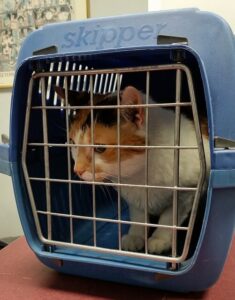How to Move With Pets
Not all animals were created equally. Just think about the difference in reactions from a cat when you pull out a pet carrier versus the reaction when you take out your dog’s leash. The cat has a sixth sense and seems to know when you are ‘thinking’ about taking the pet carrier out of storage, while the dog pants excitedly by his leash waiting for a walk.
Dogs are typically social creatures by nature and often accompany their human counterparts on road trips, walks and other outings. They can adapt to different environments often with little disruption. In contrast, cats are normally solitary creatures and crave a consistent surrounding for a sense of security, especially if they are indoor-only pets. Of course, every pet has its own personality and you’ll want to prepare them for your move based on what you know about them already.
Driving? Prepare them ahead of time
Rather than keeping your pet carrier in storage, have it out in plain view in the weeks before you start packing for your move. Leave the door open and prep the interior with bedding and a favorite toy. Be sure to reward your kitty when she goes in with a treat, petting or words of praise. Come moving time, she may be more willing to enter the carrier on her own.
If your dog only associates car rides with trips to the veterinarian, now is the time to take them on outings in your car. Go on joy rides together with no destination or drive for playtime at the park. With a little preparation, you will reduce their anxiety about car rides and make your move a bit easier.
Flying? Check airline regulations
If you are moving across the country, flying may be the best way to relocate your pet. Instead of multiple days of road travel, you’ll reduce your pet’s travel time to just hours.
Depending on the size of your pet, you may or may not be able to take them onboard with you on the airplane. Most U.S. airlines allow small dogs, cats, and birds in the cabin during domestic flights. Carriers will have size restrictions and will need to fit under the seat in front of you. A soft sided carrier works best and is often a requirement of airlines.
If you have a larger pet, you have the option of checking them onto an airplane, but they will be transported to your destination in the cargo area below the plane. Travel can be stressful for pets whether in the cabin or in cargo, so you should try to book direct flights to your destinations to avoid transfers that can cause stress and delays. When using the cargo area to transport your pet, choose temperate months of spring and fall as the cargo area is not climate controlled. Many airlines have their own restrictions on which months they allow pet cargo travel.
You’ll want a sturdy crate with ample room for your pet to stand and move during air travel in the cargo area. Metal hardware and cable ties for securing crates during travel is advised to avoid mishaps of the crate opening or disassembling during the trip. Remember to provide water during the flight by securing a water bowl in the crate.
If you are not comfortable bringing your pet onto a plane or your pet is not healthy, consider a pet relocation service that can safely transport your pet over the road.
Packing for your pet
You will want to contact your veterinarian ahead of your trip to make sure there are current on their vaccinations and are healthy enough to travel. When moving to a new state, you’ll need to obtain a health certificate. States have different requirements and the highway patrol has the right to ask for proof of health if you are stopped while on the interstate. Most vets will require a visit to ascertain the health of your pet and ensure vaccinations are current before providing you with a health certificate. Plan your visit one to two months ahead of your move as to not to add to the anxiety of the transition.
Make sure your pet has proper identification. The most foolproof method of pet identification is a microchip, which is implanted just underneath the skin on the back of the neck. It is important that you have your most current contact information on file with the microchip company so you can be easily contacted in case your pet escapes during your move or after you’ve settled into your new home.
Pack a box or bag for your pet that includes the health records, food, water, toys, extra bedding and a pet first aid kit. Cats generally will hold their bladder all day while in their crate during travel, but having a little box available in the car might be a good idea, especially for kittens and older cats.
New home sweet home

If you will be living in temporary housing after your move and storing your furniture and most of your belongings, consider including a few items that are familiar to your pet, including a dog bed, blankets and cat trees or scratch posts. Select a storage facility near you so that you have your items close at hand when you need them, generally 3-5 miles away is the perfect distant to self storage centers. Choosing a self storage business that allows access 365 days per year will be the most convenient option so that you don’t need to plan your move into permanent housing around their schedule.




